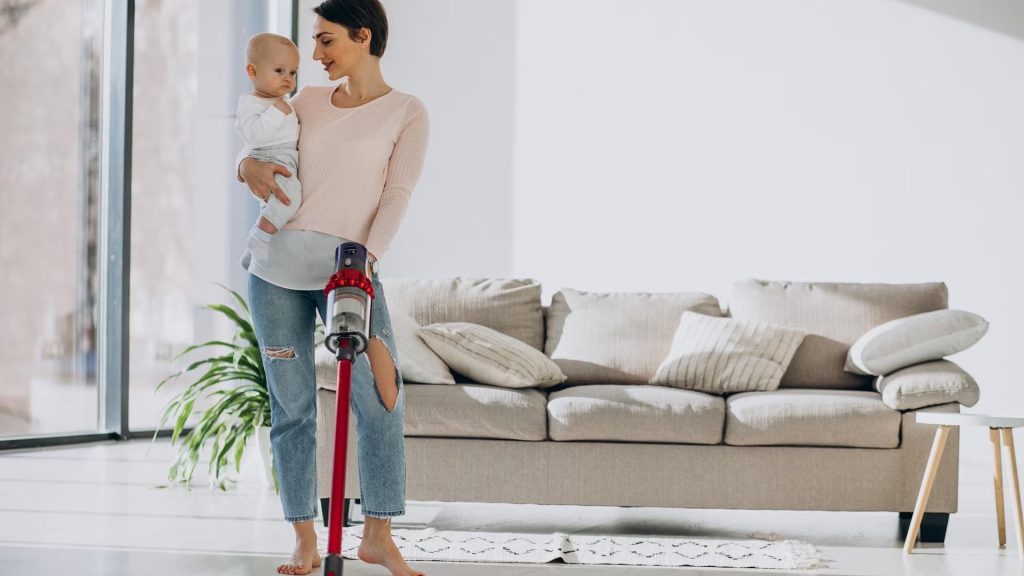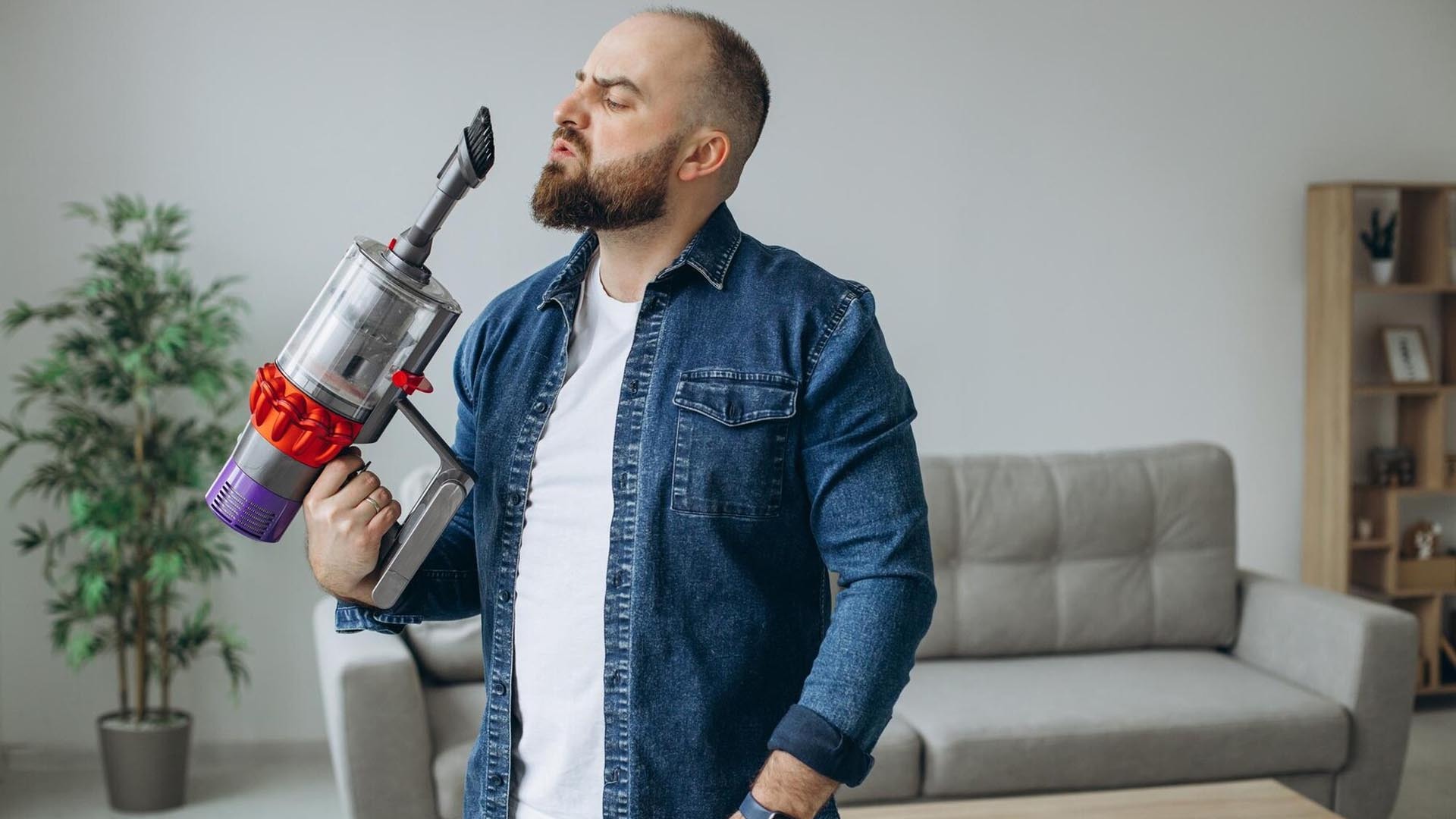Dyson vacuums are known for their impressive suction power and versatility in cleaning different types of floors. However, some users might find the suction strength to be too intense for certain situations, such as delicate surfaces or thick carpets. If you’re wondering, “can you adjust suction on a Dyson?”, the answer is yes! In this article, we will delve into the question of whether or not the suction power of a Dyson vacuum cleaner can be adjusted.
Key points
- Dyson vacuums have powerful suction capabilities and are designed to self-adjust to different surfaces
- Suction power can be manually adjusted on certain models
- Users can adjust suction by using built-in settings, specific attachments, and performing regular maintenance
- Factors affecting suction power include airflow and connection of parts, the Dyson High Torque cleaner head setting, dust and debris accumulation, and battery health
- Dyson cordless vacuums offer multiple suction modes, while upright models have self-adjusting cleaner heads with some offering manual controls.
While certain models of Dyson vacuum cleaners are self-adjusting for different floor types, others provide options to manually control the suction power. This feature comes in handy when the vacuum’s strong suction becomes difficult to maneuver on specific surfaces or when attempting to conserve battery life in cordless models. It is essential to understand how to properly regulate the suction power on your Dyson vacuum to ensure effective and efficient cleaning without causing any damage to the surfaces in your home.
In the following sections, we will explore the different methods and techniques that can be employed to adjust the suction power on various Dyson vacuum cleaner models. This includes taking advantage of built-in settings, using specific attachments, and maintaining your vacuum to avoid blockages that could negatively impact performance.

Can You Adjust Suction On A Dyson?
Dyson vacuum cleaners are known for their powerful suction capabilities, which enable them to effectively clean various types of flooring, such as carpets and linoleum. These vacuums are designed with a self-adjusting feature that allows them to seamlessly transition between different surfaces.
The self-adjusting feature achieves efficient cleaning by automatically adapting the vacuum’s head height to the thickness of the carpet or the relative flatness of hard floors. This means that instead of manually adjusting the vacuum for each surface type, the vacuum effortlessly adjusts as you move from one surface to another, ensuring optimal cleaning results.
In some cases, the suction power of a Dyson vacuum might be excessive for certain carpet types, especially thicker ones. When this occurs, it is important to know how to make adjustments to get the best cleaning outcome. Some Dyson vacuum models have various suction power settings that can be adjusted to suit the user’s requirements. To do this, simply locate the suction control button, which is usually placed either on the vacuum’s body or handle, and adjust accordingly.
If a Dyson vacuum does not have an adjustable suction feature, users can still adapt the vacuum for optimal cleaning by performing regular maintenance, such as checking for and removing blockages in the vacuum’s airways or cleaning filters to ensure smooth airflow. Additionally, using alternative attachments, such as an upholstery tool, can help improve cleaning efficiency on specific surfaces.
Factors Affecting Suction Power
Several factors influence the suction power of a Dyson vacuum cleaner. Understanding these factors can help users identify and remedy potential issues that may hinder the vacuum’s performance. Below are some of the primary factors affecting suction power:
1. Airflow and connection of parts: The connection of vacuum cleaner parts to each other plays a vital role in airflow and suction power. Any gaps or false air entry points can cause the suction power to decrease. Ensuring that all parts are securely connected and undamaged will help maintain optimal suction strength.
2. Dyson High Torque cleaner head setting: Some Dyson vacuum cleaners, such as the V15, have a switch on the High Torque cleaner head that allows users to adjust the suction power. Sliding the switch towards the ‘+’ increases the suction for ground-in dirt, while sliding it towards the ‘-‘ reduces the suction for more delicate surfaces. This feature ensures optimal cleaning performance according to the type of surface being cleaned.
3. Dust and debris accumulation: Over time, dust and debris can accumulate in the filters, tubes, and rotating brushes, causing a decrease in suction power. Regularly cleaning these components will help maintain consistent suction performance. Refer to the user manual for guidance on cleaning and maintenance of your specific Dyson vacuum model.
4. Battery health: For cordless Dyson vacuums, battery health can also impact suction power. A depleted or faulty battery may cause the vacuum to lose power, resulting in decreased suction. To ensure maximum performance, it is important to charge the battery according to the manufacturer’s recommendations and replace it when needed.
Can You Adjust Suction On A Dyson – Adjusting Suction
Dyson vacuums are known for their ability to self-adjust to different floor types and conditions. However, it’s important to understand how the suction adjustments work on various models to effectively use and maintain your device.
Dyson Cordless Vacuums
Dyson cordless vacuums, such as the V-series, offer multiple suction modes that can be adjusted using a switch or buttons on the vacuum. You can choose between low, medium, and high power settings depending on your cleaning needs, with higher settings providing more suction and lower settings offering longer battery life.
Many Dyson cordless models also have attachments or accessories, such as motorheads and soft roller cleaner heads, which are designed for specific floor types and can easily be swapped for optimum cleaning performance.
Dyson Upright Vacuums
Upright models like the Dyson Ball Animal 2 feature self-adjusting cleaner heads that automatically adapt to different floor types, making suction adjustments less necessary. However, some models may still offer switches or controls that allow you to manually adjust the suction level or turn off the brush bar for delicate surfaces.
For thick carpets or situations where the vacuum is difficult to push, removing the sole plate and foam rubber strip around the edge, as found in the DC41 Animal model, can help improve the device’s performance and ease of use.
Dyson Canister Vacuums
Canister Dyson vacuums, such as the Dyson Cinetic Big Ball, often have features similar to the upright models, including self-adjusting cleaner heads. They may also include controls or switches for adjusting suction levels, like the cordless vacuums.
In addition to these controls, using the right accessory or attachment for the floor type and ensuring proper maintenance of your vacuum’s filters and components will help maintain optimal suction and cleaning effectiveness.
Regular Maintenance for Optimal Suction
Ensuring optimal suction in your Dyson vacuum requires regular maintenance. By performing a few simple tasks, you can keep your vacuum running smoothly and efficiently. This section covers the essential steps for maintaining your vacuum: cleaning the filter, emptying the dustbin, and unclogging the nozzle.
Cleaning the Filter
Dyson vacuums are equipped with washable filters designed to trap dust and allergens. It is recommended that you clean the filter at least once a month to maintain optimal suction. To do this:
- Turn off and unplug the vacuum.
- Remove the filter by either twisting it out or pressing a release button, depending on the model.
- Wash the filter using cold water without any soap or detergent. Rinse thoroughly until the water runs clear.
- Squeeze out any excess water and let the filter air-dry completely for at least 24 hours before reassembling it in the vacuum.
Emptying the Dustbin
Regularly emptying the dustbin can also improve the suction of your Dyson vacuum. To empty the dustbin:
- Hold the vacuum over a trash can or bag.
- Release the dustbin by pressing the dedicated release button.
- Allow the debris to fall into the trash can or bag. Gently tap the dustbin to remove any remaining debris.
- Close the dustbin and ensure it securely clicks back into place.
Unclogging the Nozzle
Occasionally, a clogged nozzle may be the cause of reduced suction. To unclog the nozzle:
- Turn off and unplug the vacuum.
- Inspect the nozzle and remove any visible debris. Use a long, flexible brush or a straightened coat hanger to dislodge any blockages.
- Check the hose for any additional obstructions and remove them as needed.
- Reassemble the nozzle and hose, ensuring that all parts are securely connected.
By following these regular maintenance tasks, you can keep your Dyson vacuum functioning at its best and ensure a consistently strong suction.
Troubleshooting Common Suction Issues

When experiencing a suction problem with a Dyson vacuum, it is essential to investigate the primary causes before making any adjustments. The following paragraphs will detail a few troubleshooting tips for common suction issues:
1. Check for incoming power supply: A likely reason for a non-functioning suction motor could be the lack of incoming power supply. For corded vacuum models, ensure that power is coming through the wall socket by testing it with another device. Address any power issues with the house or wall socket if necessary.
2. Examine the bleed valves: Dyson vacuums feature bleed valves that can be opened or closed to regulate suction. If the performance is poor with the bleed valve open, it is recommended to close them again. Make sure they are neither stuck nor blocked by debris.
3. Regular filter maintenance: If suction issues persist after cleaning the filters, it’s essential to rule out any problems with the filters themselves. Remove the filters, empty the bin, and briefly test the suction from the handle. In case the suction is still inadequate, consider replacing the filters.
4. Inspect the extension tube and vacuum head: Blockages in the extension tube, brush bar, or vacuum head may result in reduced suction. Detach these parts and visually examine them for any debris or obstructions. Clear any blockages and reassemble accordingly.
By following these troubleshooting tips, users should be able to identify and resolve most common suction issues with their Dyson vacuum. Remember always to consult the user manual or Dyson support for specific model-related concerns and further assistance.
Conclusion – Can You Adjust Suction On A Dyson?
In conclusion, Dyson vacuum cleaners are designed to be self-adjusting for different floor types, making it difficult to manually adjust the suction level. However, if the vacuum cleaner is struggling with thick carpets, you can try lowering the suction power on the unit or performing maintenance to remove any potential blockages.
For users experiencing issues with overly strong suction, it may be necessary to consider a different vacuum model with less suction power, such as the Cinetic Big Ball Animal + Allergy model, which Dyson may offer at a discounted price for existing customers.
When it comes down to it, Dyson vacuums are known for their performance and durability. By understanding how the vacuum cleaner works and conducting regular maintenance, users can ensure that their Dyson vacuum remains effective in cleaning various floor types.

